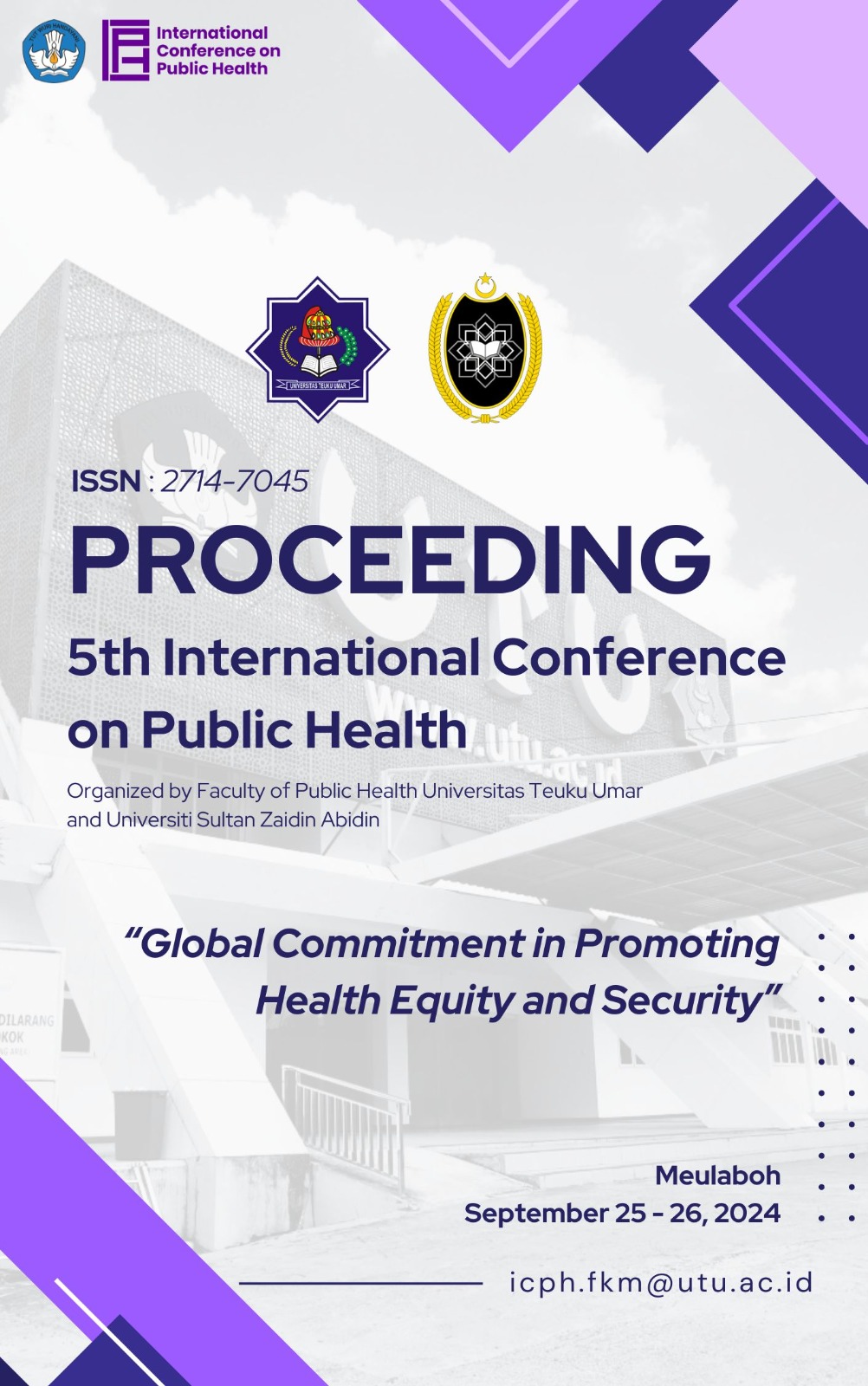The Implementation of Occupational Health and Safety Concepts in Hospitals by Nurses: A Literature Review
Keywords:
Hospital, Nurses, Occupational Health and SafetyAbstract
Occupational Health and Safety (OHS) is an effort aimed at ensuring the physical and mental integrity and well-being of workers, along with their work and culture, to achieve a prosperous society. The implementation of OHS in hospitals is influenced by three factors: predisposing, enabling, reinforcing, and core-care. The predisposing factor, which includes knowledge, attitude, beliefs, and values, is the most significant in affecting OHS in hospitals, with beliefs being the most influential indicator. In contrast, reinforcing and core-care factors have a less dominant impact on the health and safety of nurses in providing patient care. The enabling factor has a relationship with OHS implementation in hospitals, with regulations being the most influential indicator. This study aims to analyze the application of the OHS concept in hospitals by nurses. A quantitative research method was employed, utilizing data from researchers in Indonesia. These sources include credible journals and articles obtained through electronic databases such as Google Scholar, with journals selected from the 2012-2020 volumes providing full-text access. This study concludes that the implementation of OSH in hospitals can increase nurses' awareness and compliance with OSH procedures in reducing the risk of occupational accidents and injuries to improve the quality of health services, reduce stress and fatigue and also increase nurses' job satisfaction. Conclusion The augmentation of nurses' awareness and adherence to OSH protocols yields significant reductions in occupational injuries, accidents, and stress, thereby enhancing healthcare quality and occupational satisfaction.
References
Burton, K. (2012). A study of motivation: How to get your employees moving (Master's thesis, Indiana University).
Dharmayanti, C. I., Biomi, A. A., & Marniati, M. (2023). Analysis of Security and Safety of Tourists at Waterfalls in Gianyar Regency. PROMOTOR, 6(5), 476-480.
Herawati, Y. T. (2015). Budaya keselamatan pasien di ruang rawat inap Rumah Sakit X Kabupaten Jember. Jurnal IKESMA, 11(1), 52–60.
Ibrahim, H., Damayati, D. S., & Amansyah, M. (2017). Gambaran penerapan standar manajemen keselamatan dan kesehatan kerja rumah sakit di Rumah Sakit Umum Daerah Haji Makassar. Al-Sihah: Public Health Science Journal, 9(2), 160–173.
Khan, H. A., Baig, F. K., & Mehboob, R. (2017). Nosocomial infections: Epidemiology, prevention, control, and surveillance. Asian Pacific Journal of Tropical Biomedicine,7(5), 478–482. https://doi.org/10.1016/j.apjtb.2017.01.019 .
Nazirah, R., & Yuswardi. (2017). Perilaku perawat dalam penerapan manajemen kesehatan dan keselamatan kerja (K3) di Aceh. Idea Nursing Journal, 8(3), 1–6.
Notoatmodjo, S. (2010). Promosi kesehatan: Teori dan aplikasinya. Jakarta: Rineka Cipta..
Occupational Health and Safety in Hospitals: A Systematic Review" (2022), Journal of Occupational and Environmental Medicine, Vol. 64, No. 10.
Peraturan Menteri Kesehatan Republik Indonesia Nomor 66 Tahun 2016 Tentang Keselamatan Dan Kesehatan Kerja Rumah Sakit
Rahayuningsih, P. W., & Hariyono, W. (2011). Penerapan manajemen keselamatan dan kesehatan kerja (MK3) di instalasi gawat darurat RSU PKU Muhammadiyah Yogyakarta. Jurnal Kesehatan Masyarakat (Journal of Public Health), 5(1), 25–33. https://doi.org/10.12928/kesmas.v5i1.1084
Redjeki, S. (2016). Kesehatan dan keselamatan kerja. BPPSDMK Kementerian Kesehatan RI.http://bppsdmk.kemkes.go.id/pusdiksdmk/wp-content/uploads/2017/08/Kesehatan-dan- Keselamatan-Kerja-Komprehensif.pdf
Sagita, R. W. (2019). Factors affecting nurses’ compliance in implementing standard precautions in government hospitals in Yogyakarta. Indonesian Contemporary Nursing Journal (ICON Journal), 3(2), 1. https://doi.org/10.20956/icon.v3i2.4972
Syah, S. A., Siahaan, P. B. C., Is, J. M., & Duana, M. (2024). Faktor–Faktor Yang Berhubungan Dengan Kelelahan Kerja Pada Pekerja Pt. Prima Cahaya Utama Tahun 2024. Jurnal Kesehatan Tambusai, 5(3), 8508-8516.
Simamora, R. H. (2011). Role conflict of nurse relationship with performance in the emergency unit of hospitals RSD Dr. Soebandi Jember. The Malaysian Journal of Nursing, 3(2), 23-32.
Silvia, T., Firdauz, F., Siaahan, P. B. C., & Anwar, S. (2024). Hubungan Pengetahuan, Sikap Kerja, Masa Kerja Dengan Kejadian Low Back Pain Di Pt. Prima Cahaya Utama Tahun 2024. Jurnal Kesehatan Tambusai, 5(3), 8484-8491.
Tukatman, Sulistiawati, Purwaningsih, & Nursalam. (2015). Analisis keselamatan dan kesehatan kerja perawat dalam penanganan pasien di Rumah Sakit Benyamin Guluh Kabupaten Kolaka. Ners, 10(2), 343–347.
Wati, L., Fitriani, F., Rismawati, R., Ernawati, E., & Marniati, M. (2024). BPJS Employment Strategy in Guaranteeing Occupational Health and Safety (OHS) for Non-Wage Earners (NWE) in the Fisheries Sector. Health Dynamics, 1(7), 223-229.
World Health Organization (WHO). (2019). "Occupational Health and Safety in Healthcare





